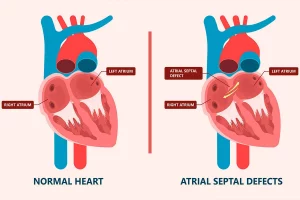What is chronic total occlusion/CTO treatment?
When a coronary artery is fully blocked for at least three months with no blood flow through the blocked artery, it is referred to as “chronic total occlusion (CTO).”
These procedures involve the use of specialized stiff wires, balloons, and stents developed for this purpose to quickly open heavily calcified, rigid, ossified, and severe atherosclerotic plaques in the arteries.
The process is similar to an angiogram and is performed without sedating the patient, using a needle inserted through the groin.
In which diseases is CTO (chronic total occlusion) treatment used?
Blockage in the main arteries supplying the heart is known as ‘coronary artery’ disease, and in individuals with this condition, symptoms such as chest pain, shortness of breath, early fatigue, and palpitations can occur during activities such as walking, climbing stairs, and even in advanced stages during daily activities. In cases of blockage in the main arteries, blood flow to the heart is provided by naturally occurring small vessels called “collaterals.” However, if this situation of the heart not being adequately nourished continues for an extended period without the necessary treatment, it can lead to irreversible heart failure.
How is CTO (chronic total occlusion) treated?
In the interventional treatment of completely blocked arteries, pre-examinations are sometimes conducted using computed tomography. Subsequently, the patient undergoing the procedure has their severely calcified, hardened, and heavily atherosclerotic plaques addressed with specialized tools, including wires, balloons, and stents designed for this purpose. This angiography-like interventional procedure is performed without sedating the patient, and access to the blocked arteries is gained via a needle inserted through the groin to reach the heart.
What are the advantages of chronic total occlusion (CTO) treatment of opening completely occluded vessels?
The opening of CTO (chronic total occlusion) arteries leads to an increase in the heart’s contractile strength, significant improvement in cardiac symptoms, including chest pain and shortness of breath, enhanced exercise capacity, prevention of heart failure issues, and the elimination of the need for coronary artery bypass grafting (CABG) surgery. This results in an overall enhancement in the patient’s life expectancy and quality of life.
What are the symptoms of “chronic total occlusion (CTO)”?
The blockage in the coronary arteries can occur suddenly or gradually over time. This condition, which manifests itself over the years, can progress silently without causing any symptoms in the patient. The situation that arises with the sudden occlusion of the arteries is a heart attack, which requires immediate intervention.
What are the treatment methods used to open completely blocked vessels in “chronic total occlusion (CTO)”?
In the past, the only solution method for opening the chronic total occlusion (CTO) artery was the coronary artery bypass graft (CABG) surgery. However, nowadays, new treatment options are available for patients due to advances in scientific and technological methods, and non-surgical options with special tools have come into the agenda.







